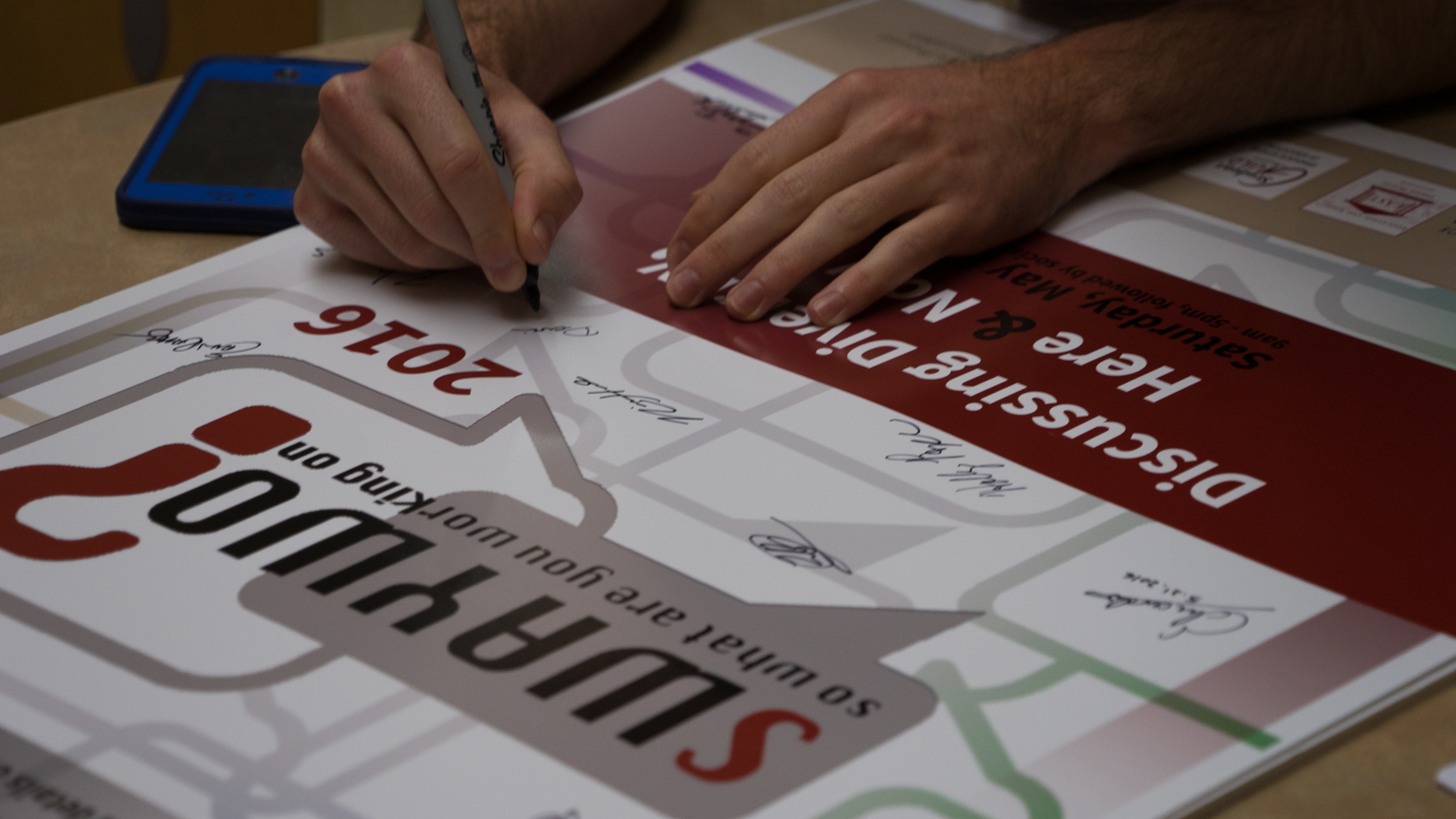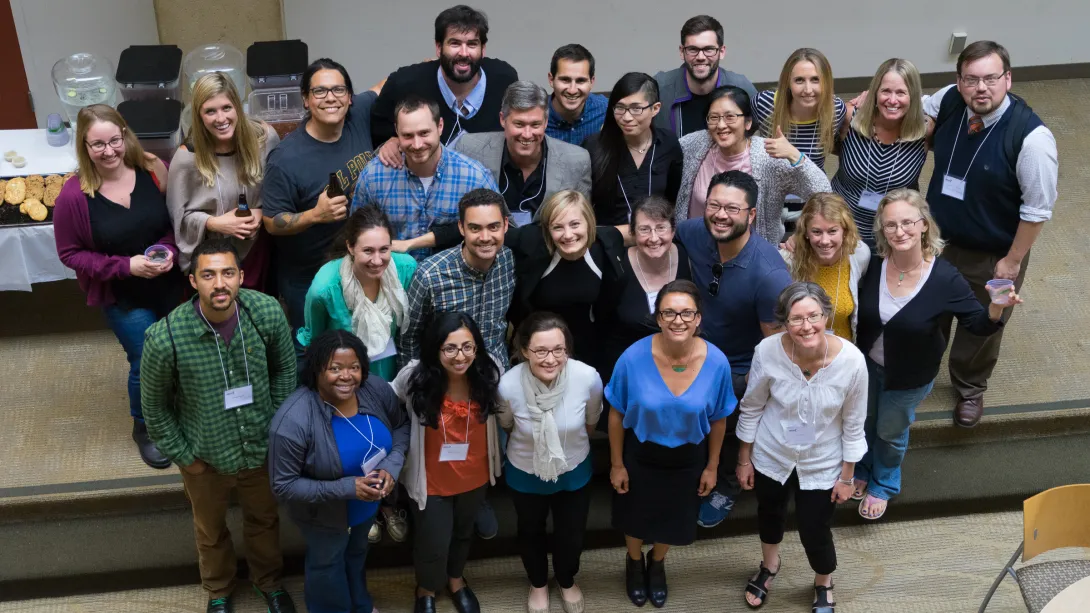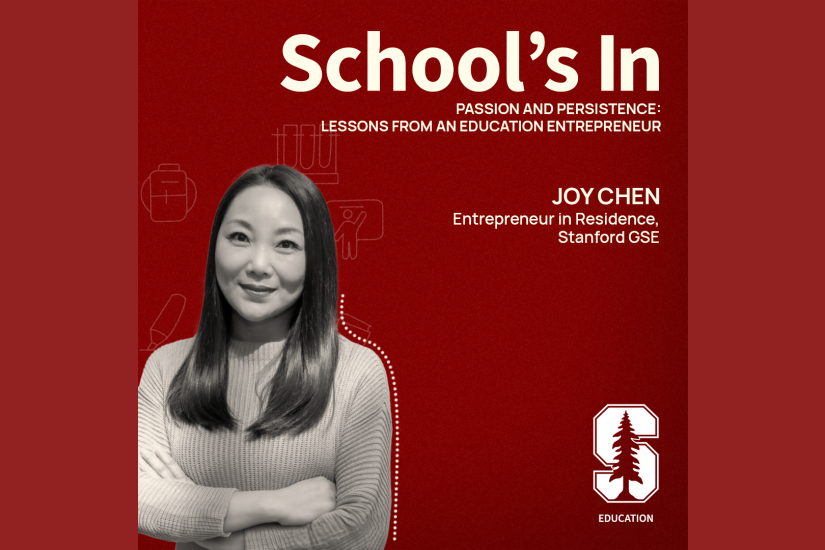
K.C. Busch, PhD ’16, was in the third year of her doctoral program at Stanford Graduate School of Education (GSE) when the sense of isolation started to set in. She’d finished most of her coursework and, as she shifted her focus to her dissertation, her contact with other students narrowed primarily to those in her sphere of research.
“I didn’t really have any classes with the rest of the GSE anymore,” said Busch, now an assistant professor of science education at North Carolina State University. “I missed that cross-pollination that you get from talking to students who are approaching things from a different perspective.”
She hit upon the idea of organizing a student conference to create a new space for that kind of collaboration—an informal, one-day gathering where students across the GSE could come together and share their work-in-progress for feedback and ideas.
A few other students joined her to help make it happen. With some funding from then-dean Deborah Stipek and a grant from the Office of the Vice Provost for Graduate Education, “we just went full tilt and ran with it,” said Busch.
The event proved so popular that students have continued organizing it every year since.
On May 24 GSE students will present the fifth annual “So, What Are You Working On?” (SWAYWO) conference, featuring research and ideas from students at the GSE and other education schools. Deborah Loewenberg Ball, a renowned mathematics researcher at the University of Michigan and former president of the American Educational Research Association, will give a keynote address over lunch.
“We just wanted to bring people together to learn from each other,” said Eduardo R. Muñoz-Muñoz, PhD ’18, now an assistant professor of education at San Jose State University and one of SWAYWO’s co-founders. “It was very grassroots, very organic. As teachers, we plant seeds, and sometimes those seeds take root.”

The quirky name
The founders knew the name of their conference was curious, in both senses of the word. But it conveyed the informal, welcoming atmosphere they sought to create. In keeping with the spirit of creating an event “for and by students,” it was one of a range of choices on a survey the organizing committee put before the GSE student body for a vote.
Devin Corrigan, MA ’15, another of the initial organizers, remembers the committee’s surprise when the cheeky “So, What Are You Working On?” emerged as the clear winner.
“It was just a phrase that came to mind that captured what we were trying to do—take that casual hallway interaction and put it into a more formal conference structure,” said Corrigan, who now works as an education policy analyst at the San Francisco Unified School District. “I think we just included it for fun, but I was kind of delighted that it won.”
Matchmaking and more
Still, SWAYWO isn’t something participants necessarily take lightly. The conference serves varied and important purposes for students, said Catherine Lemmi, a fifth-year doctoral candidate at the GSE who has helped plan the event since the beginning.
“Some students are looking for feedback on methods and design,” said Lemmi. “Others are looking for feedback on their presentation style. I’m sure that collaborations have also come together through SWAYWO presentations.”
In fact, a paper published earlier this spring in the journal Science Education grew out of a connection that developed at the first SWAYWO conference. Brian Donovan, PhD ’16, now a research scientist at BSCS Science Learning in Colorado Springs, Colo., was presenting preliminary findings on his research into the impact that learning about genetic differences has on children’s racial biases.
Rob Semmens, PhD ’17, now an assistant professor at the Naval Postgraduate School, came to the session and had some ideas for expanding the study design.
“We’d hung out socially a couple of times but had never really talked much about each other’s research,” said Donovan. “Rob came to the talk and said, ‘You’re showing that biology education can make kids racist. Have you thought about trying to make kids less racist?’ We started to talk about conducting some intervention studies, and it unfolded from there. The whole paper design came together within three or four months after SWAYWO.”

A group photo from the 2016 SWAYWO conference includes founders K.C. Busch (bottom row, right), Catherine Lemmi (bottom row, center), Holly Pope (bottom row, left), Eduardo R. Muñoz-Muñoz (back row, fourth from left) and Devin Corrigan (back row, fourth from right).
"We just wanted to bring people together to learn from each other. As teachers, we plant seeds, and sometimes those seeds take root.”
—Eduardo R. Muñoz-Muñoz, SWAYWO co-founder
For the founders, providing a space for students to present rough ideas and early research findings was key.
“We didn’t want presentations that were completely polished,” said Holly Pope, PhD ’16, another SWAYWO co-founder and an assistant professor of elementary mathematics education at the University of Hawaii at Manoa. “We wanted people to feel comfortable sharing work that was half-baked. We wanted ideas that were in process.”
Tapping a network of peers
When Dan Schwartz took over as dean in the fall of 2015, he was so enthusiastic about SWAYWO that he established the GSE Students’ Collaborative Learning Fund to support the event and to encourage other student-led initiatives.
The circle of presenters is expanding this year due to an effort spearheaded by Rosa Chavez, a third-year doctoral student in mathematics education and director of this year's conference. Students at other universities were invited to submit proposals, and a portion of the sessions will feature research by graduate students from Harvard Graduate School of Education, Teachers College at Columbia University, the University of Texas at Austin, the University of Illinois at Urbana-Champaign, UCLA and the University of Michigan, as well as a group of undergraduates from the University of Texas at San Antonio.
By broadening the slate of presenters, the organizers hope to build on one of SWAYWO’s original goals of creating a space where students can tap into new perspectives.
“Good research arises at Stanford because there’s so much expertise, and a lot of that expertise is among students,” said Donovan. “Talking to other students is what enabled me to push my research forward. You have to talk to as many people as possible about your ideas.”
“We’re all learning as we go, and you don’t know about possible touchpoints unless you’re presenting your work like this,” said Busch. “It’s so important to leverage this network of peers that we have.”
So, What Are You Working On? (SWAYWO) takes place on Friday, May 24, from 9:00am to 5:00pm. Students, faculty and staff are encouraged to attend. All sessions will be held at the Center for Educational Research at Stanford (CERAS) at 520 Galvez Mall.
Faculty mentioned in this article: Dan Schwartz



